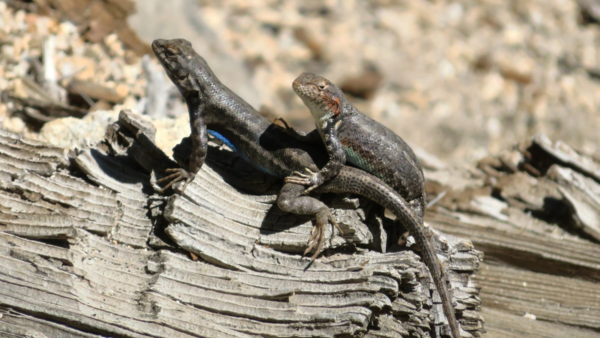What are the 'unknown unknowns' in nature?
“There are known knowns; there are things we know we know. We also know there are known unknowns; that is to say we know there are some things we do not know. But there are also unknown unknowns — the ones we don't know we don't know.” – Donald Rumsfeld
By CAMERON BARROWS
Over the past half century there have been extraordinary advances in understanding the molecular nature of life. From heredity to physiology to function to ancient origins, our knowledge has leapt ahead at a dizzying pace. However, that focus on the building blocks of life has come at a cost. There has been a parallel decline in attention to questions regarding whole organisms and their place in the environment, how they fit into ecological communities, and how they respond to changes in their environment. Some argued that shift was inevitable, since after a previous couple centuries of focus on natural history, we now know all that we can about those whole organism-natural community questions. Or, perhaps we just don’t know what we don’t know.
Our “community of Naturalists” has been documenting the incremental upslope climb of desert lizards as lower elevations have become hotter and drier. Intertwined with that task, we are observing new interactions between species, species who would have previously existed in separate ranges but now find themselves living shoulder to shoulder, cheek to jowl. A species’ niche includes its diet and where it lives. According to “niche theory,” each species should occupy a unique niche that allows coexistence without interspecies competition for the same limited resources (usually food). Individuals within the same species should occupy discrete territories or areas to limit within-species competition for those resources. That’s what they teach in school, a.k.a, “known knowns.”
Given such known knowns, and assuming that limiting resources (ground insects, rock and boulder perches, sunny and shady sites for thermoregulation) are distributed evenly, we should observe a more or less even distribution of lizards as we survey territory abutting territory. We should, but that is not what we have found. Rather we see clusters of lizards often of multiple species, separated by stretches with no observed lizards at all. Sometimes these lizard “clusters” can be a half dozen or more individuals, with our naturalists calling out their sightings almost faster than I can record them. It might be that my assumption of an even distribution of limiting resources is wrong. I am sure that the resources are not perfectly evenly arrayed, but the lizard clusters do not seem to align with any environmental patchiness.
Another possible explanation might be that the lizard clusters represent an enclave of lizards with superior genes – better at producing baby lizards, better at finding food, and/or better at avoiding predators – better at surviving and passing along genes. Assuming that hatchling lizards do not travel far to establish their own home range, clusters of lizards should be more related to each other than to lizards farther away. “Clusters” could offer better protection from predators – more eyes and so better to detect a potential predator. If lizard clusters represent a survival edge for their members, then the clusters could relax typical intra-species aggressive behaviors, essentially becoming social units. Our observations seem to support that, with many sightings of lizards sitting near and sometimes even touching other lizards. We even saw two different species of lizards appearing to be social – a western fence and a southern sagebrush lizard sitting side by side and touching with no aggression. Around the world there are lizards that have developed social associations – black girdled lizards in South Africa, marine iguanas on the Galapagos Islands, and at least in winter, our local granite spiny lizards to name just a few examples.
Of course, whether or not fence and/or sagebrush lizards are living in social groupings is only a hypothesis, fitting into Rumsfeld’s known unknown criterion. It does remind us that there are still many unanswered questions within the purview of natural history.
Nullius in verba
Go outside, tip your hat to a chuckwalla (and a cactus), think like a mountain, and be safe.
